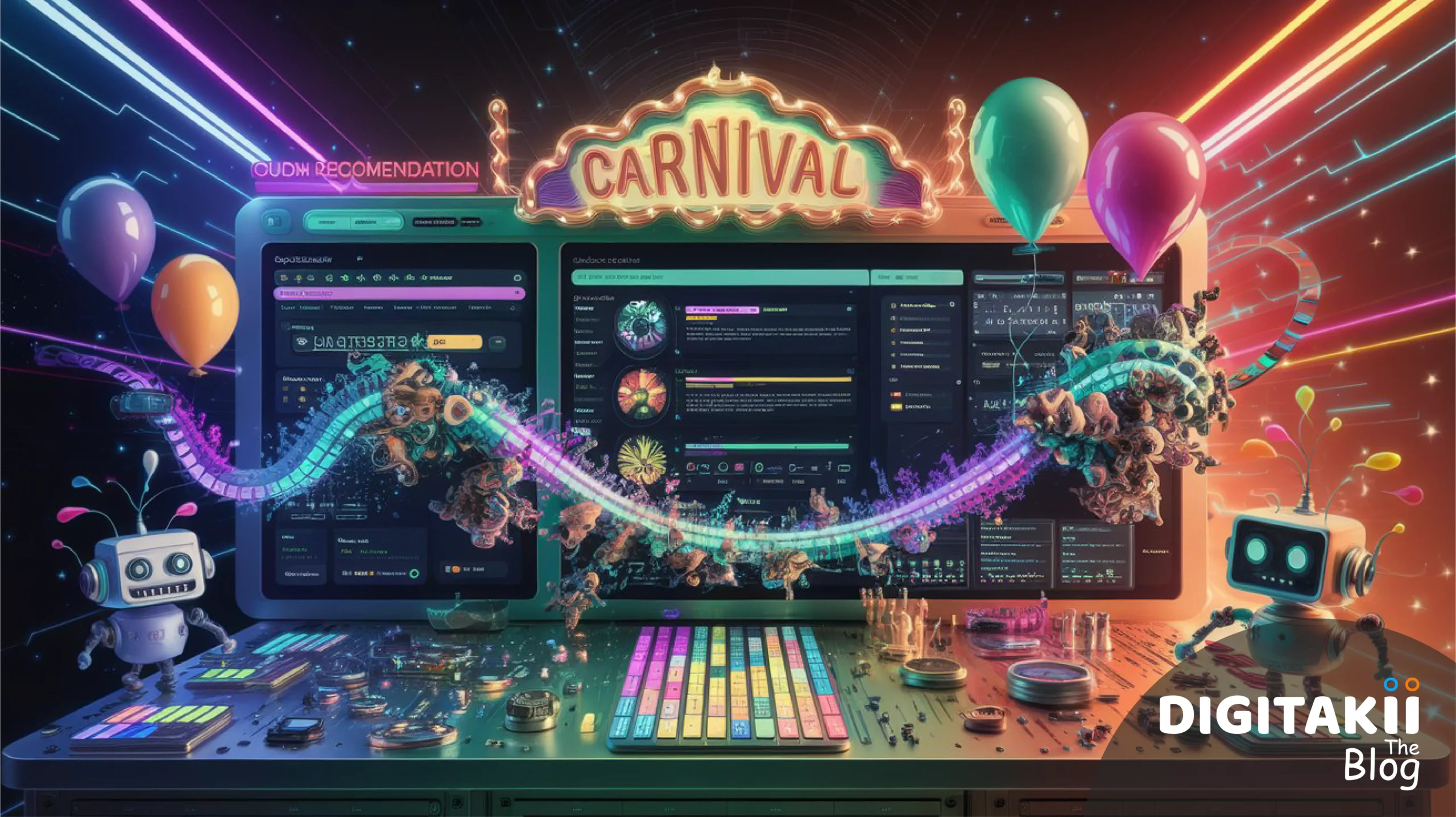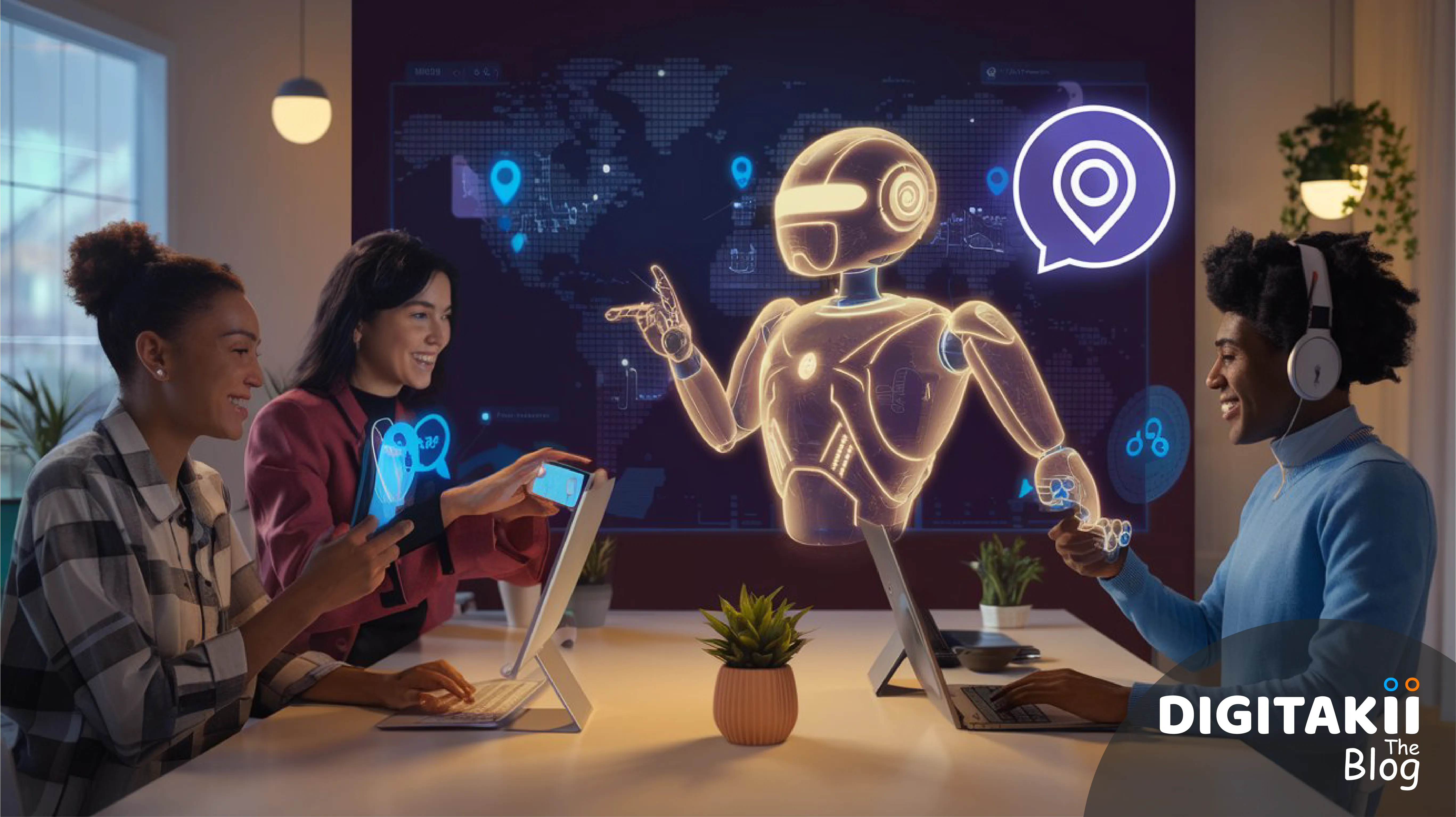In today’s hyper-connected world, the traditional methods of marketing are rapidly evolving, giving way to more sophisticated and nuanced approaches. Hyper-personalization a technique that leverages Artificial Intelligence (AI) to deliver highly tailored marketing experiences is at the forefront of this transformation. This in-depth exploration will cover how AI can be harnessed to achieve hyper-personalization in marketing, the benefits it offers, its practical applications, and the challenges that come with its implementation.
What is Hyper-Personalization?
Hyper-personalization goes beyond basic personalization by using advanced AI technologies to create deeply customized marketing interactions. Unlike traditional personalization, which often relies on broad demographic or behavioral data, hyper-personalization uses AI to analyze detailed individual data and deliver content that is uniquely relevant to each customer.
Hyper-personalization involves:
- Real-Time Data Processing: AI can process and analyze data in real-time, allowing marketers to adjust their strategies instantly based on current user behavior.
- Advanced Segmentation: By utilizing sophisticated algorithms, businesses can segment their audience into highly specific groups, allowing for more precise targeting.
- Contextual Understanding: AI can understand the context in which a user interacts with content, enhancing the relevance of marketing messages.
The Role of AI in Hyper-Personalization
AI plays a critical role in hyper-personalization by enabling marketers to leverage large volumes of data to tailor their messaging. Here’s a closer look at how AI contributes to this process:
1. Data Collection and Integration
AI systems collect data from a variety of sources, including:
- Social Media: Monitoring interactions and engagements on platforms like Facebook, Twitter, and LinkedIn.
- Website Analytics: Tracking user behavior on your site, such as page views, time spent on pages, and navigation paths.
- Purchase History: Analyzing past transactions to predict future buying behavior.
These data points are integrated into a single, cohesive view of the customer, allowing for more accurate and personalized marketing strategies.
2. Behavioral Analysis
AI algorithms analyze customer behavior to identify patterns and preferences. This includes:
- Browsing Patterns: Understanding which pages users visit most frequently and how they navigate through your site.
- Interaction History: Tracking past interactions with emails, ads, and other marketing content.
- Engagement Metrics: Measuring how users engage with different types of content, such as videos, blog posts, or social media updates.
3. Predictive Analytics
Predictive analytics uses historical data to forecast future behavior. For example:
- Recommendation Engines: Suggesting products based on previous purchases or browsing history.
- Churn Prediction: Identifying customers who are likely to disengage and taking proactive steps to retain them.
- Trend Analysis: Spotting emerging trends and adjusting marketing strategies accordingly.
4. Dynamic Content Generation
AI can create and deliver personalized content in real-time. This includes:
- Customized Email Campaigns: Generating personalized subject lines and content based on user preferences and behaviors.
- Targeted Ads: Creating ads that are specifically designed to appeal to individual users based on their past interactions.
- Personalized Website Experiences: Adjusting website content, such as product recommendations and promotional offers, based on individual user profiles.
Benefits of Hyper-Personalization with AI
Implementing hyper-personalization through AI offers numerous benefits that can drive significant business growth. Here’s an in-depth look at these advantages:
1. Enhanced Customer Engagement
Customer engagement is critical for the success of any marketing strategy. Hyper-personalization increases engagement by:
- Delivering Relevant Content: Users are more likely to engage with content that resonates with their interests and needs.
- Creating Meaningful Interactions: Personalized messages and offers create a sense of relevance and importance, leading to higher engagement rates.
2. Improved Conversion Rates
Personalized marketing efforts lead to higher conversion rates by:
- Addressing Specific Needs: Tailored offers and messages are more likely to address the specific needs and preferences of individual customers.
- Increasing Click-Through Rates: Personalized emails and ads have higher click-through rates, leading to more conversions.
3. Greater Customer Retention
Retention is a key factor in long-term business success. Hyper-personalization fosters customer loyalty by:
- Building Stronger Relationships: Personalized experiences make customers feel valued and understood, enhancing their loyalty to your brand.
- Encouraging Repeat Purchases: Customers who have positive experiences are more likely to make repeat purchases and remain loyal.
4. More Efficient Marketing Spend
AI-driven hyper-personalization allows for more efficient allocation of marketing resources by:
- Targeting High-Value Segments: Focusing on segments with the highest potential for conversion, rather than broad, generalized campaigns.
- Optimizing Campaign Performance: Continuously analyzing and adjusting campaigns based on real-time data to achieve the best results.
Practical Applications of AI-Driven Hyper-Personalization
The practical applications of AI in hyper-personalization are diverse and impactful. Here are some key areas where AI can enhance marketing efforts:
1. Personalized Email Marketing
AI can revolutionize email marketing by:
- Crafting Custom Messages: Using data to generate personalized email content that speaks directly to the recipient’s interests and behaviors.
- Optimizing Send Times: Determining the best times to send emails based on individual user activity patterns.
- Segmenting Audiences: Creating highly specific audience segments for more targeted email campaigns.
2. Tailored Website Experiences
AI enhances website experiences by:
- Dynamic Content Display: Showing personalized content, such as product recommendations and offers, based on user behavior.
- Adaptive User Interfaces: Adjusting website layouts and elements to cater to individual user preferences and interactions.
- Real-Time Personalization: Offering real-time product suggestions and content updates based on current user activity.
3. Targeted Social Media Advertising
AI can optimize social media ad campaigns by:
- Precision Targeting: Delivering ads to users based on detailed behavioral and demographic data.
- Creative Personalization: Tailoring ad creatives to align with individual user interests and engagement history.
- Performance Monitoring: Continuously analyzing ad performance and making real-time adjustments to improve results.
4. Personalized Customer Support
AI-driven customer support includes:
- Chatbots and Virtual Assistants: Providing personalized responses based on previous interactions and user data.
- Automated Issue Resolution: Using AI to resolve common customer issues efficiently and effectively.
- Proactive Support: Anticipating customer needs and offering assistance before problems arise.
Challenges and Considerations
While hyper-personalization offers substantial benefits, it also presents certain challenges:
1. Data Privacy and Security
Data privacy is a major concern when implementing hyper-personalization. Key considerations include:
- Compliance with Regulations: Adhering to data protection regulations such as GDPR and CCPA.
- Transparent Data Practices: Clearly communicating data collection and usage practices to customers.
- Robust Security Measures: Implementing strong security protocols to protect customer data.
2. Integration with Existing Systems
Integrating AI-driven hyper-personalization with existing systems can be complex. Considerations include:
- Seamless Integration: Ensuring that new AI tools work smoothly with current marketing platforms and technologies.
- Data Synchronization: Keeping data consistent and up-to-date across different systems.
- Training and Support: Providing adequate training for marketing teams to effectively use new AI tools.
3. Maintaining a Human Touch
While AI enhances personalization, maintaining a human touch is crucial. Strategies include:
- Balancing Automation and Human Interaction: Combining automated responses with personalized human engagement.
- Empathy and Authenticity: Ensuring that customer interactions feel genuine and empathetic.
- Feedback Mechanisms: Allowing customers to provide feedback on their experiences to improve personalization efforts.
Future Trends in AI-Driven Hyper-Personalization
The future of hyper-personalization with AI is promising, with several emerging trends shaping the landscape:
1. Advanced AI Technologies
The development of more sophisticated AI technologies will further enhance personalization capabilities. Emerging technologies include:
- Natural Language Processing (NLP): Improving the ability of AI to understand and generate human-like language.
- Predictive Modeling: Enhancing the accuracy of predictive analytics to better anticipate customer needs.
2. Greater Integration Across Channels
Future hyper-personalization efforts will involve more seamless integration across various channels, including:
- Omnichannel Marketing: Providing a consistent and personalized experience across all customer touchpoints.
- Cross-Platform Data Integration: Aggregating data from multiple platforms to create a unified customer profile.
3. Ethical AI and Responsible Personalization
As AI technology advances, ethical considerations will become increasingly important. Future trends may include:
- Ethical AI Practices: Ensuring that AI is used responsibly and ethically in personalization efforts.
- Transparent Personalization: Providing customers with clear information about how their data is used for personalization.
Conclusion
Hyper-personalization, driven by AI, represents a significant advancement in marketing strategy. By leveraging AI’s capabilities to analyze and interpret data, businesses can create highly relevant and engaging experiences for their customers. The benefits of hyper-personalization such as enhanced engagement, improved conversion rates, and greater customer loyalty make it a powerful tool for achieving marketing success.
#HyperPersonalization #AIinMarketing #MarketingTech #FutureOfMarketing #AIRevolution #PersonalizedMarketing #DigitalMarketingTrends #TechInnovation #MarketingStrategy #AIpowered #DataDrivenMarketing #MarketingSolutions #SmartMarketing #TechTrends2024 #AI #MarketingAutomation #CustomerExperience #MarketingInsights #MarketingMagic #DigitalTransformation #TechSavvy #MarketingTools #MarketingSuccess #AITrends #MarketingExcellence #Digitakii #DigitakiiTheBlog
===============================
Ready to dominate the digital world? 🚀💻
Don’t just exist online – THRIVE! At www.digitakii.com, we’re your secret weapon for digital success.
🌐 Stunning websites that convert 📱 Social media that sizzles 🔍 SEO that skyrockets your visibility 📊 Data-driven strategies for real results
Why blend in when you can stand out? Let’s craft your digital masterpiece together!
👉 Visit www.digitakii.com now and let’s make some digital magic! ✨
#DigitalMarketing #DigitalPresence #DigitalMarketingAgency
===============================



